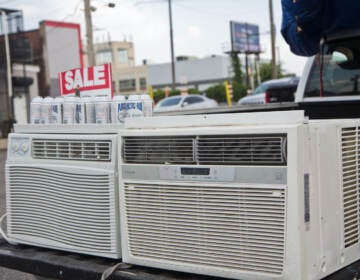Breakdown of Economic Stimulus Legislation, courtesy of the American Planning Association
For those looking for specific details on President Barack Obama’s American Recovery and Reinvestment Act, check out this week’s APA Advocate, courtesy of the American Planning Association.
OVERVIEW
The House approved its $819 billion American Recovery and Reinvestment Act of 2009 on January 28 by a vote of 244–188 (details below). Despite overtures of bipartisanship by the Obama administration, no Republicans voted in favor of the bill; 11 Democrats also voted no.
In the Senate, the stimulus bill was approved by the Appropriations and Finance committees last week. It is expected to be brought to the floor for debate and a series of votes next week. The Senate bill would cost approximately $888 billion, largely because of the inclusion of tax provisions connected to the Alternative Minimum Tax. The final package is likely to rise above the $819 billion approved by the House. Following action by the Senate, differences in the two versions will have to be reconciled. The Obama administration expects that the final package will attract bipartisan support. Recent indications of a deepening economic recession have added to the urgency of action on Capitol Hill.
DETAILS: TRANSIT STIMULUS
The $819 billion stimulus package passed by the House last week includes funding for key transportation programs, but timing requirements are of some concern at both the state and local levels. Of the total, $63 billion is allocated for infrastructure investment, including $30 billion for the Federal Highway Administration, to be distributed to states using the formula established by the most recent highway law. The House included $12 billion for mass transit, including $1.5 billion for the Transit Capital Improvement Program and $1.5 billion for the New Starts Program, as added by an amendment from Reps. Jerrold Nadler (D-N.Y.), Peter DeFazio (D-Ore.), Daniel Lipinski (D-Ill.), Mike McMahon (D-N.Y.), Keith Ellison (D-Minn.), and Ed Perlmutter (D-Colo.). An amendment from Rep. James Oberstar (D-Minn.) strikes language that had given MPOs longer timelines to obligate funding. The bill now requires that states obligate 50 percent of funding within 90 days and that MPOs do so within 75 days.
The Senate stimulus package, as marked up by the committees but not yet passed, allocates $27 billion for highway construction, including supplemental grants for states under the STP formula for highways and bridges. It also requires each state to allocate at least 5 percent of its funds toward programs that qualify for the Congestion Mitigation and Air Quality (CMAQ) improvement program. The bill also provides $8.4 billion for mass transit, apportioned via the transit formula.
For both highway and transit funding, 50 percent of funds must be allocated within 180 days, and the other half must be assigned within one year. The first half of the funds will be allocated exclusively to states, while most of the second half will be allocated to local governments. The bill contains a “use-or-lose” provision, which means that any funds remaining after one year will be transferred into the Supplementary Discretionary Grants program. The stimulus allocates $5.5 billion to this program, which gives the Secretary of Transportation discretion to award funds on a competitive basis to highway and bridge projects; to public transportation, including New Starts or Small Starts; or to passenger rail, freight, and port improvements. In addition the bill provides $1.1 billion to Amtrak and intercity passenger rail.
No funding is provided to fixed guideway modernization or specifically to New Starts, both of which receive funding in the House stimulus package. However, an additional $2 billion is included for high-speed rail that does not appear in the House bill. Overall, there are fewer dollars for key programs in the Senate bill, and concerns exist over the distribution and sub-allocation of funding.
DETAILS: NEIGHBORHOOD, BLOCK GRANTS
Through programs administered by the Department of Housing and Urban Development, the Public Housing Capital Fund is slated to receive $5 billion in both versions of the stimulus package. The House bill provides $4.2 billion for neighborhood stabilization programs; the Senate bill provides only $2.25 billion. More funding for the HOME Investment Partnership Program appears in the Senate bill: $2.25 billion versus $1.5 billion in the House. The House stimulus also provides $1 billion in Community Development Block Grants (CDBG), a program not referenced in the Senate bill.
For a school repair and modernization program administered by the Department of Education, the House allotted $14 billion for K-12 and an additional $6 billion for higher education. The Senate bill boosted funding for K-12 to $16 billion, but inserted only $3.5 billion for higher education facilities. The disparity will likely be negotiated when the bill goes to conference once it is passed by the Senate.
DETAILS: ENERGY INVESTMENT STIMULUS
In the energy investment funding portion of its stimulus bill, the House included an effort to double renewable energy production and increase efficiency in a variety of sectors, including government buildings and schools, as well as promoting technological developments in the production and distribution of energy.
Funding allocations in the House bill include $32 billion for energy grid investment and the rebuilding of transmission, distribution, and production systems. Both the House and the Senate bills allot $4.5 billion for smart grid investment through the Department of Energy, but the Senate includes more funding for Energy Efficiency & Conservation Block Grants: $4.2 billion versus $3.5 billion in the House. The Senate bill does not include funding for Institutional Grants for Energy Sustainability, which receive $1 billion in the House stimulus. While the amounts differ slightly, both the House and Senate would provide about $6 billion to the General Services Administration for federal green building construction and repair.
Water infrastructure funding remained relatively consistent between the House and Senate versions of the bill. Provisions included $1.1 billion for the Rural Water and Waste Disposal Program in the House versus $1.4 billion in the Senate, and $2 billion for the Drinking Water State Revolving Fund. However, for the Clean Water State Revolving Fund, the House includes $6 billion, while the Senate limited funding to $4 billion.
WHYY is your source for fact-based, in-depth journalism and information. As a nonprofit organization, we rely on financial support from readers like you. Please give today.





